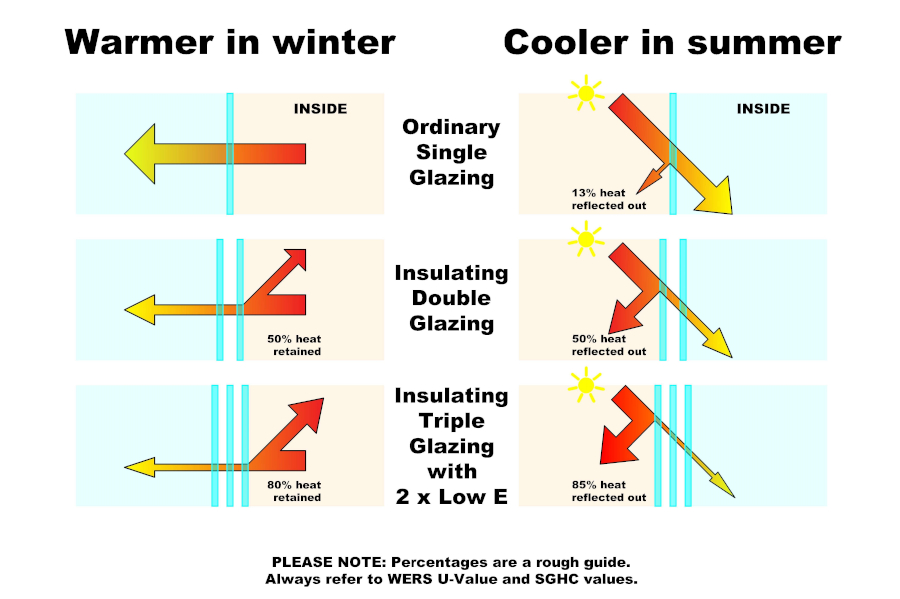All Categories
Featured
Table of Contents
Stay Cool This Summer With Double Glazed Windows - Aaa Glass in Craigie Western Australia
That window can transfer more solar heat in winter season than in summer season. A west-facing window on a summer's afternoon has an angle of occurrence from near 0 as much as 30 with a big efficient area of solar radiation. A north-facing window, in summer season, has a high angle of incidence and a low efficient location of solar radiation, so can send less heat than a west-facing one.

You can quickly and easily enhance the thermal performance of your house by changing your windows. This is one of the most efficient approaches of restoration to attain enhanced thermal convenience. There are countless kinds of glass and frames to pick from. Choosing the right ones is very important to improving the energy effectiveness of your home.
Energy Efficient Windows: Choose The Best Option For Your ... in Martin WA
There are many different kinds of glass products to pick from. Single glazing uses a single pane of glass. Single glazing with clear glass is not really effective when it pertains to heat loss or gain. To improve efficiency, you can use single glazing with a more energy-efficient kind of glass such as low emissivity (low-e) glass.
The energy efficiency of IGUs likewise depends on: the homes of each layer of glass. Various glass types (for example, clear and low-e glass) can be put together in an IGU.
Carnegie 3163, Vic. Amazing Service By Aps Double Glazing in Menora Perth

IGU cavities can be filled with air or a more inert, low-conductivity gas such as argon the width of the cavity. Broader cavities supply lower (better) U values, with 12mm typically accepted as the favored space how well the cavity is sealed.
If argon is installed to the cavity in location of air, wetness is reliably omitted the level of desiccant (drying agent). The spacer (metal or polymer strip) that separates the glass layers contains a desiccant to absorb any moisture. Insufficient desiccant might cause wetness to condense on the glass surface in cold conditions, minimizing thermal performance.
Best Way To Block Sun Heat From Windows [Professionally] in Bicton Perth
In reality, IGUs can deliver much better energy performance for all environments, especially in heated and air-conditioned homes. Cross-section information of single, double and triple-glazing units Low emissivity glass (commonly referred to as low-e glass) decreases heat transfer. Low-e glass might be either high or low transmission: High transmission low-e glass has a covering that permits daylight from the sun to enter your home to attain good solar heat gain, but lowers the amount of the long wavelength infrared heat that can leave back through the window.
Low-e glass has either a pyrolytic finish or a vacuum-deposited thin film metal finishing. Pyrolytic coatings are resilient and can be used for any glazing; vacuum-deposited coverings are soft and are just used within IGUs. Low-e coverings can considerably enhance both U worth and SHGC; however, they need to be used correctly or they will either deteriorate or stop working to carry out as needed.
Double Glazing - About Windows - Window Film Excellence in Ballajura Perth
Low-e finishings can be used in mix with clear, toned or reflective glass. Low-e finishes on glazing can decrease heat transfer where required Image: Department of Market, Science, Energy and Resources Toned glass has actually colouring ingredients included during manufacture. It is offered in different colours, generally bronze, grey, blue and green.
Latest Posts
Faq in Bedfordale Perth
What Are Double Glazed Windows? - Build in Duncraig Western Australia
Single Glazed Vs Double Glazed Windows - Ultimate Guide in Kensington Perth